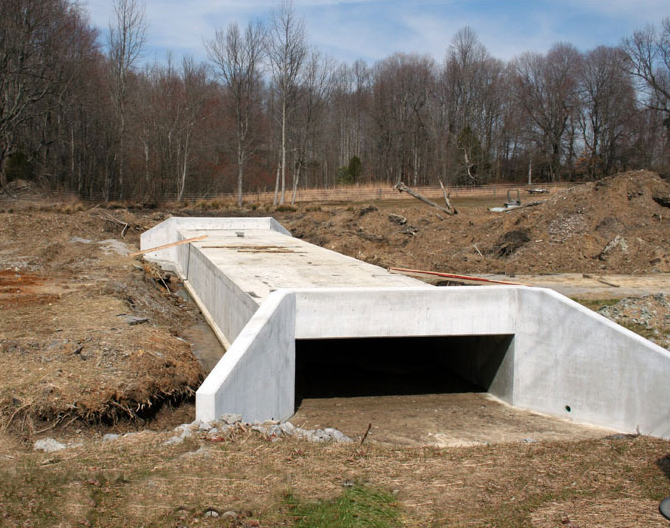First, what is a box culvert?
A box culvert is a four-sided structure that channels water past an obstacle or to a subterranean waterway. Typically embedded or surrounded by soil, a culvert may be made from a pipe, reinforced concrete or other material. Box culverts, specifically, are four-sided concrete culvers made from precast or cast-in-place concrete in the shape of a box.
Second, what is the purpose of a box culvert?
Box Culverts are used for drainage purposes by controlling the intake and outtake of water. The culvert creates a tunnel which diverts the water without impeding the flow of traffic on a roadway or highway. The box culvert will also control flooding or avoid destabilizing the surrounding land area with saturated ground water. Therefore, culverts not only offer safety for the public but also do well to prevent property damage of roads, bridges, and buildings. They can also serve as storage for material handling, service tunnels, corridor links, steam tunnels, stormwater management, wastewater treatment plants, utility trenches and even accommodate pedestrian traffic or animal crossings.
“The main purpose of the box culvert is to safely divert water from one side of the road to the other without damaging the roadways as well as prevent erosion of the roadway embankments.”
– Marshall Haydon
Third, where are Box Culverts used?
Box culverts are usually installed and built underground, under roads, highways, ramps, bridges, railways, buildings, walkways, and on construction sites. Because of the varied uses and purposes of box culverts, they can be installed anywhere under or above ground, wherever there is a need for draining purposes with a high-flow rate.
Fourth, what are the advantages of Box Culverts over traditional draining systems?
Box culverts are chosen on water drainage projects for various reasons and provide the following benefits:
- PROTECTS ROADWAYS: By diverting stormwater, waterways and ground water, culverts protect roadways from damage, erosion, and abrasion. It keeps traffic flowing smoothly on highways, bridges and railways. They extend the life of roads, thus saving time and cost of municipality’s budgets.
- HIGHER FLOW RATE: Depending on the flow rate of nearby waterways and ground water, a box culvert can provide enhanced flow capacity. Compared to round steel or concrete piping, box culverts can drain a much higher volume of water and handle a higher flow rate than pipes.
- EASIER INSTALLATION: Box culverts provide easy installation, since the box culverts are usually precast off-site and then transported to the site, this makes them easier and faster to install. They can also be case in place if the site conditions require increased customization. But the time and cost of construction is greatly reduced with prefabricated or precast box culverts.
- SUPERIOR STRENGTH: Another reason box culverts are selected on various projects is because of their superior structural strength and durability, which makes them ideal for various environments including roadways with heavy loads, unstable soil pressures, and high volume of water flow.
- LIFESPAN: The typical precast concrete box culvert with reinforced steel framing has a life expectancy of 75 to 100 years.
- VERSATILITY: Four-sided precast culverts are some of the most versatile concrete products on the market, which provide a suitable application for a variety of locations, purposes and varying water flows.
- ENVIRONMENTALLY FRIENDLY: Box culverts are made of concrete which is a durable and recyclable material.
- LOW MAINTENANCE: Since they are designed to last a long time, they are resistant to such environmental factors such as corrosion, abrasion, and chemical degradation.
Fifth, what is the process of installation of Box Culverts?
Once the site has been excavated, a trench is dug, and then a footer is formed by fabricating and placing rebar (made of reinforced steel to size) inside the formwork to aid the concrete under-tension. Because concrete is strong under compression but has low tensile strength, the rebar provides a tension reinforcement. Cast in place reinforced box culverts are constructed in a sequence so that the concrete has time to cure prior to the next phase. Footings are constructed first, then the walls and finally the top slab. Once all concrete has gained the appropriate strength, the structure is backfilled.
If using precast concrete box culverts, the installation is faster and easier by using a gravity set tongue and groove system, each box culvert end is lowered directly into the receiving joint eliminating the need of tugging or hand-cranking the monolithic box culvert, thus resulting in tighter joints free of subgrade aggregates. Once the culvert is in place and the concrete is cured, the dirt is backfilled and/or covered with aggregate rock on top. Once completed and covered, the site is ready for a safe and stable construction for the roadway or bridge.
How does Haydon Bridge Company provide quality and versatility in their box culvert construction?
At Haydon Bridge Company, we have over 50 years’ experience in constructing, installing and repairing box culverts. We have a well-established and documented quality forming system that provides a sound structure, efficient installation, and safe diversion of water. We can build single, double or triple barrel box culvert and the sizes typically range with heights from 3’ – 20’ and widths from 4’ – 22’ for each barrel.
We also provide culvert extensions on existing culverts, for example, when a widening of a roadway or highways are required, we can extend an older, existing culvert up to 20-30’ so extra lanes can be built safely without fear of flooding or water erosion. With careful planning and an efficient shoring system, we can extend the existing culvert without interrupting and/or delaying traffic flow. By installing a temporary soldier pile walls, cofferdam or sheet pile on edge of the roadway, we can retain the soil or ground water to allow for installation of the new culvert extension safely. A cofferdam* will prevent the dirt from caving in, damaging the existing culvert, the roadway or our employees. Then once the extension is fully installed, the shoring system is removed and dirt is backfilled for additional stability and aesthetics.
Safety is always our number one priority when planning, designing, and constructing any of our projects, including constructing, installing, repairing or extending box culverts.
“We realize that 100% of excavation accidents are preventative so we avoid taking shortcuts and go to extreme lengths that everyone should go to in this industry to prevent accidents or injuries. Our goal is not only to protect our employees and subcontractors, but also the traveling public so they have confidence that the roadways are durable and well built for any type of weather or environmental conditions. We’d be remiss if we didn’t invest the time and money to ensure safety.”
– Bill Pettus, Safety Manager
Some sample projects include:

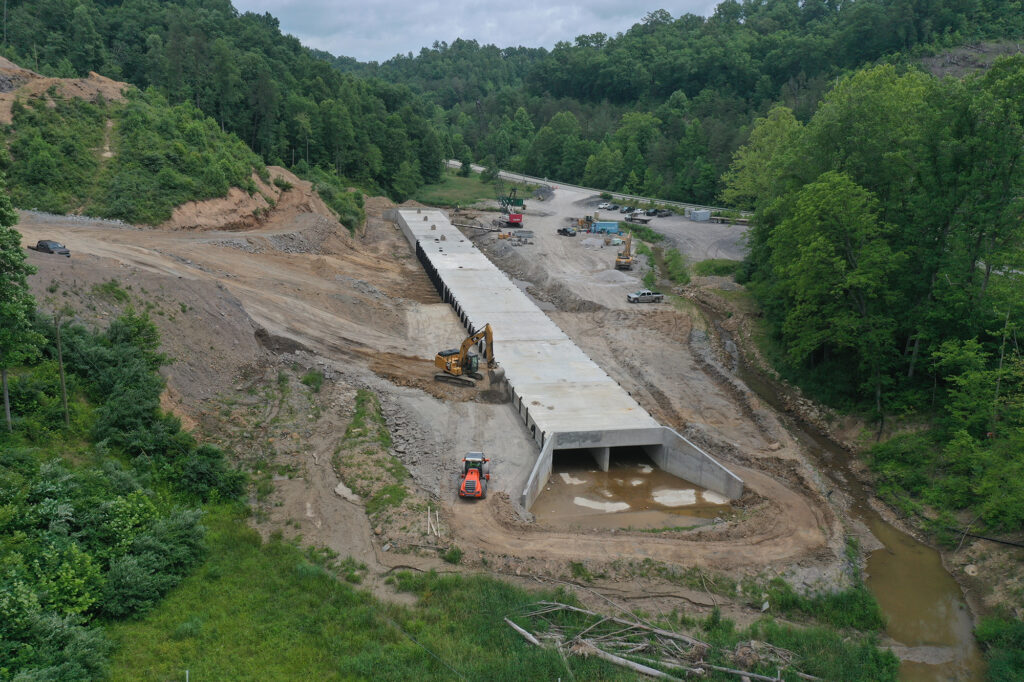
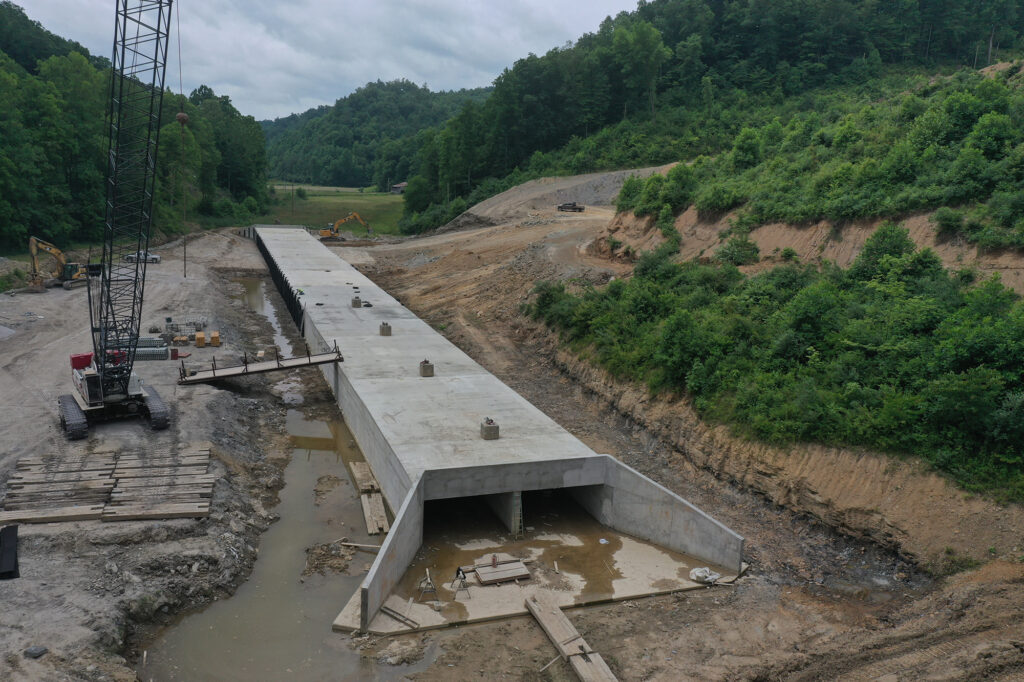
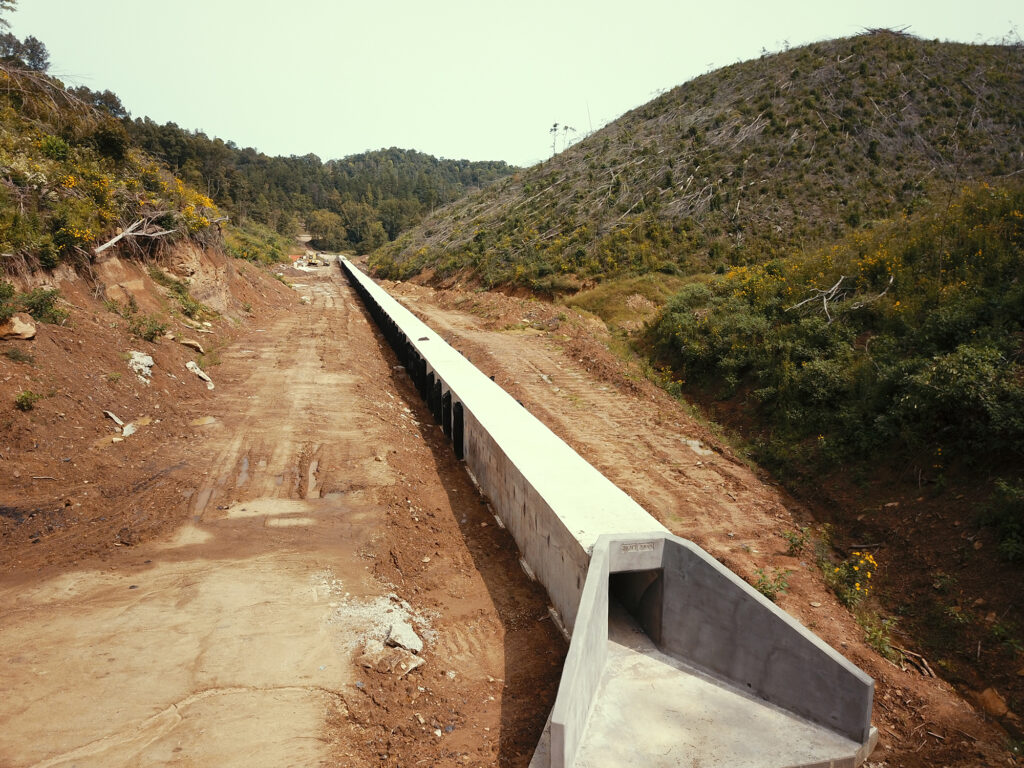
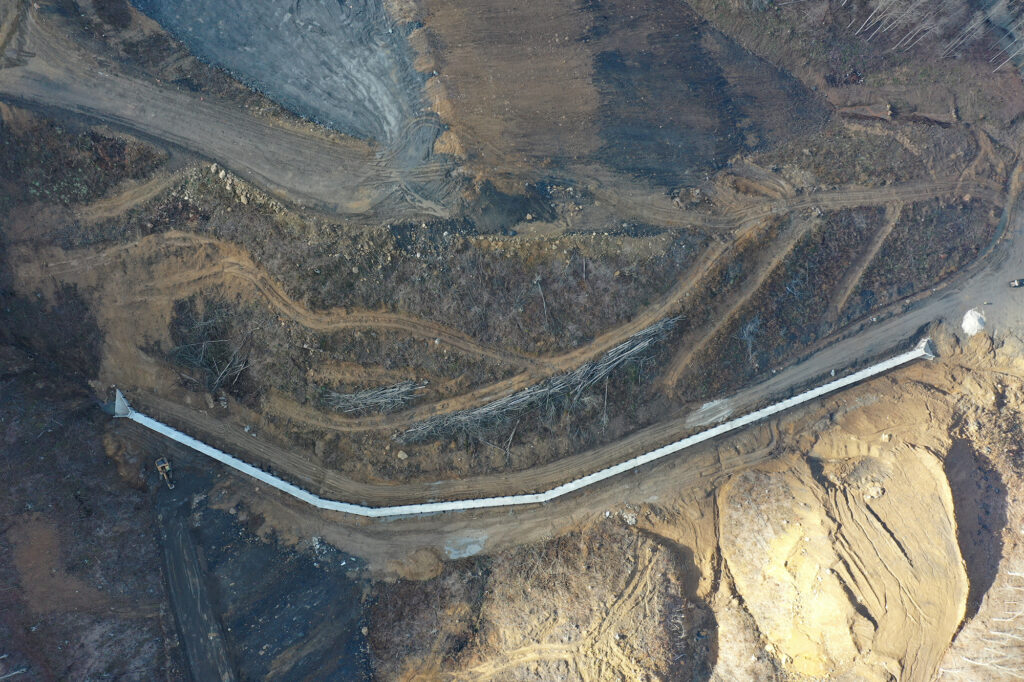
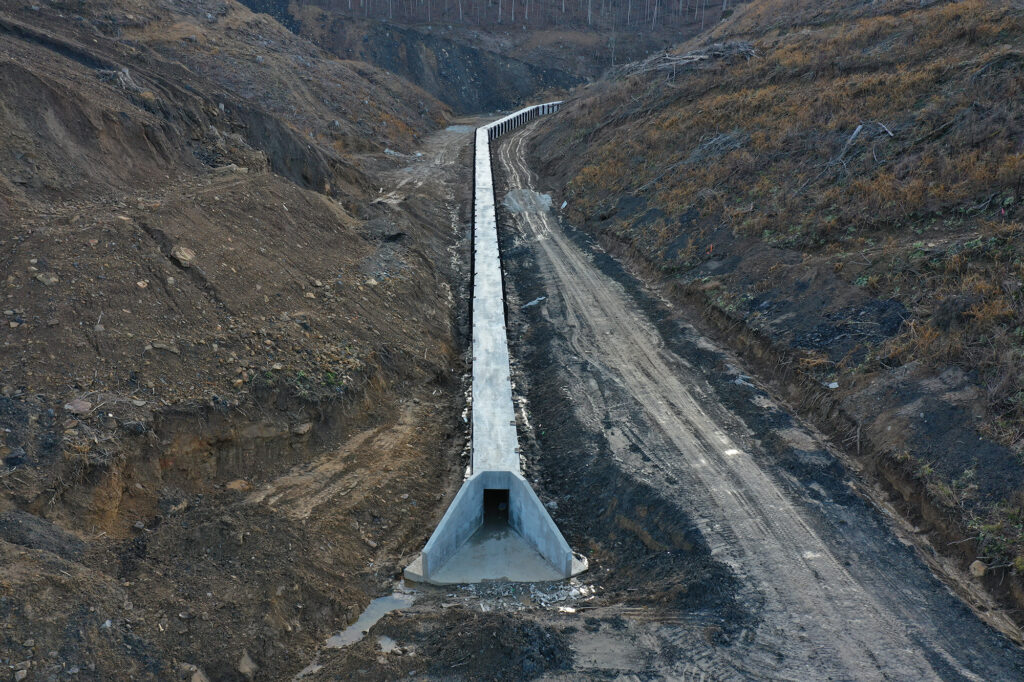
New Construction – 16’x8’ Double Barrel Box Culvert located on the Mountain Parkway
- New Construction – Multiple 4’x6’ box culverts located on the Mountain Parkway with the longest one over 1200’ in length and has over 200’ of roadway embankment fill over it.
- Extension – 13’-9’ Triple Barrel Extension in Pulaski County
- New Construction – Multiple 5’x3’ box culverts averaging 700’ in length located in Russell County
For more information about our past and ongoing projects, please see our projects page and/or contact our team.
*See our blog on Cofferdams for more information of their purpose and process.

